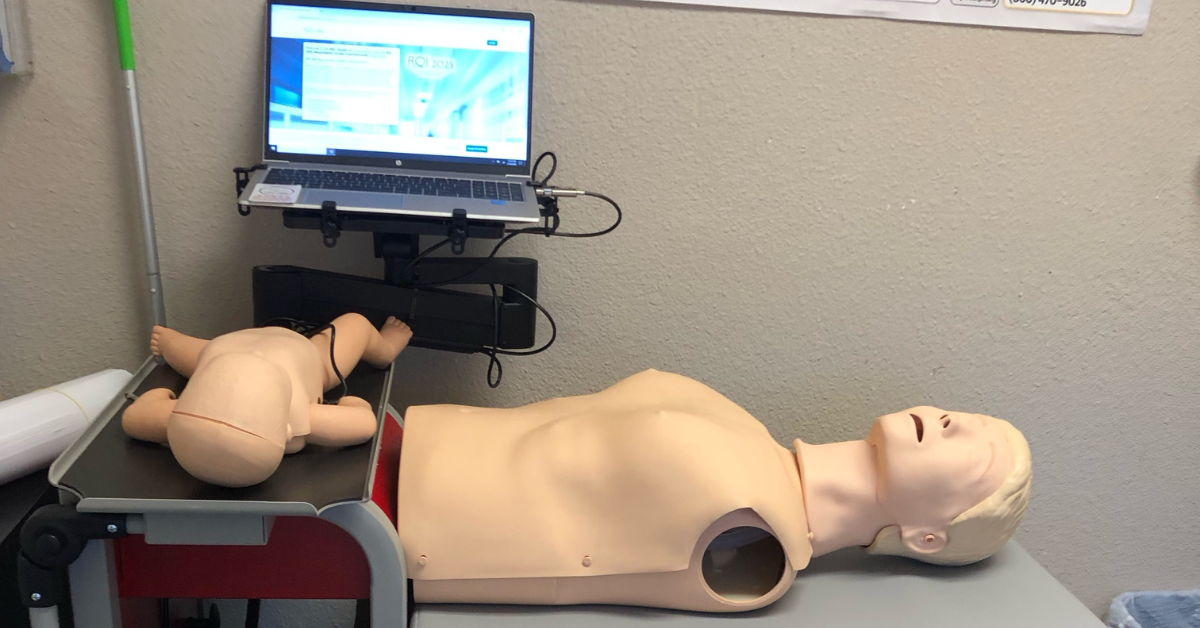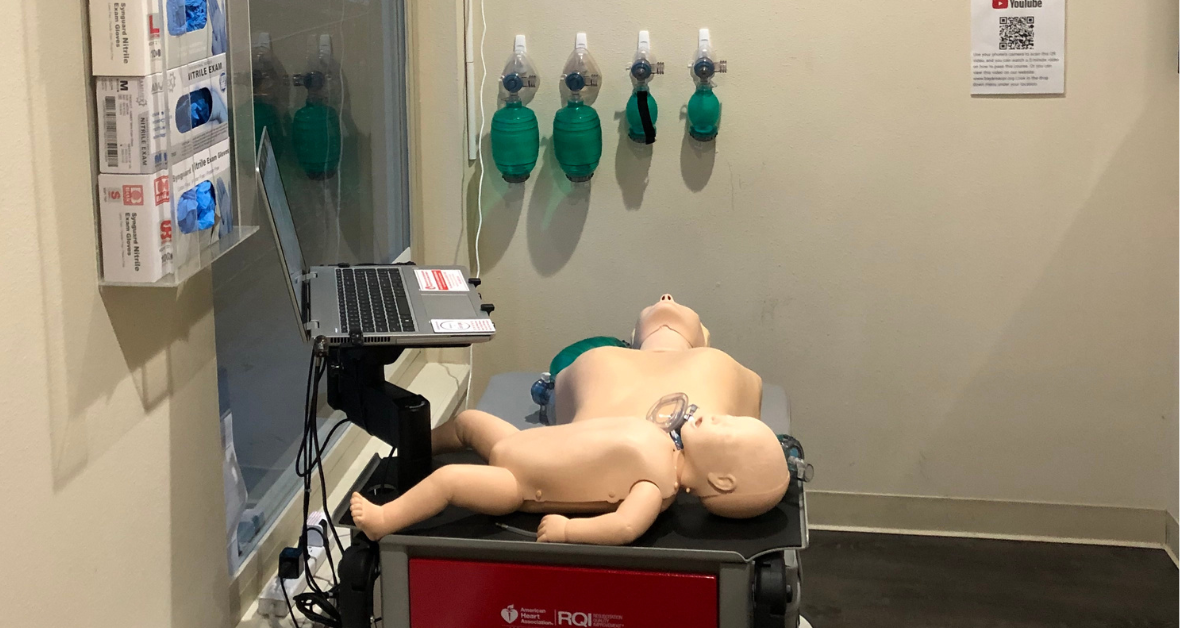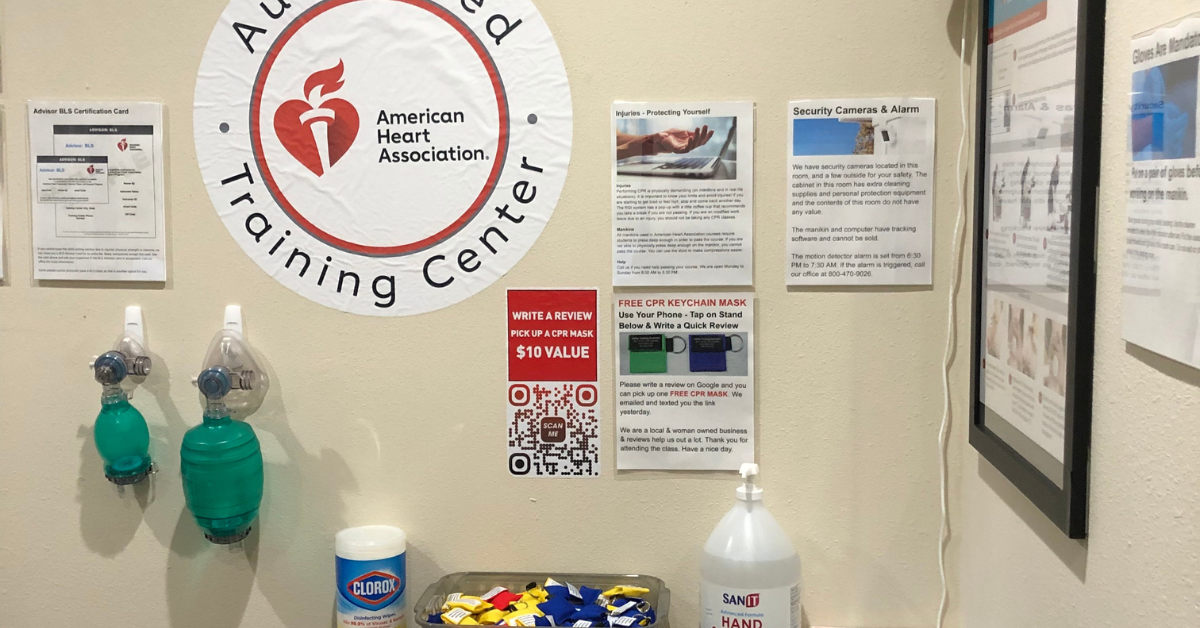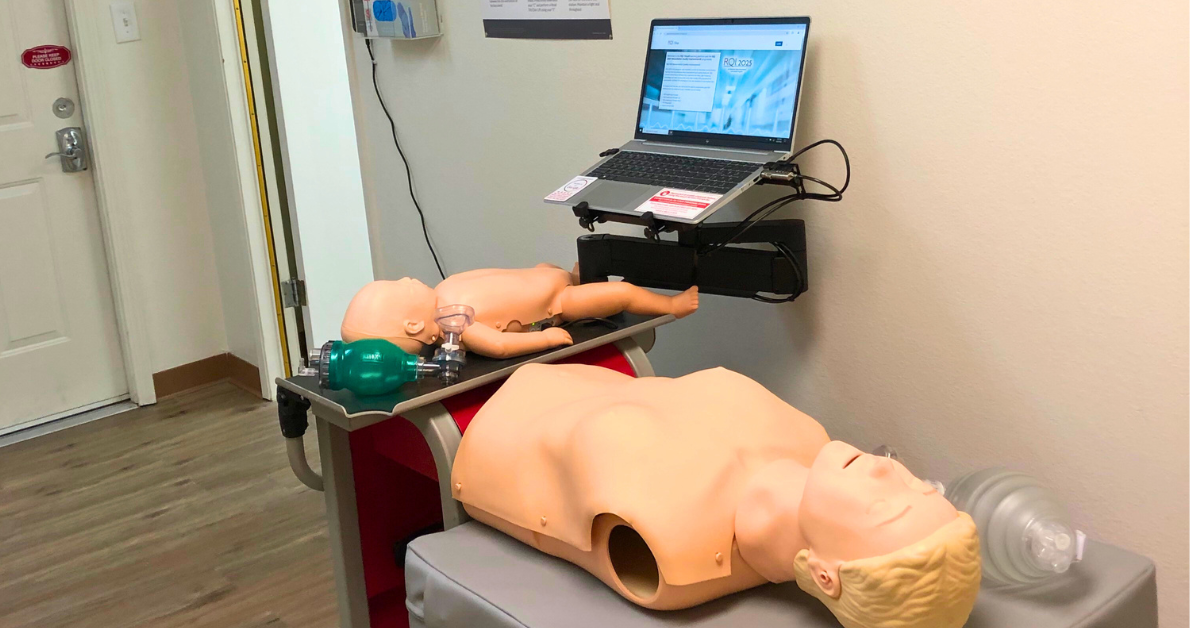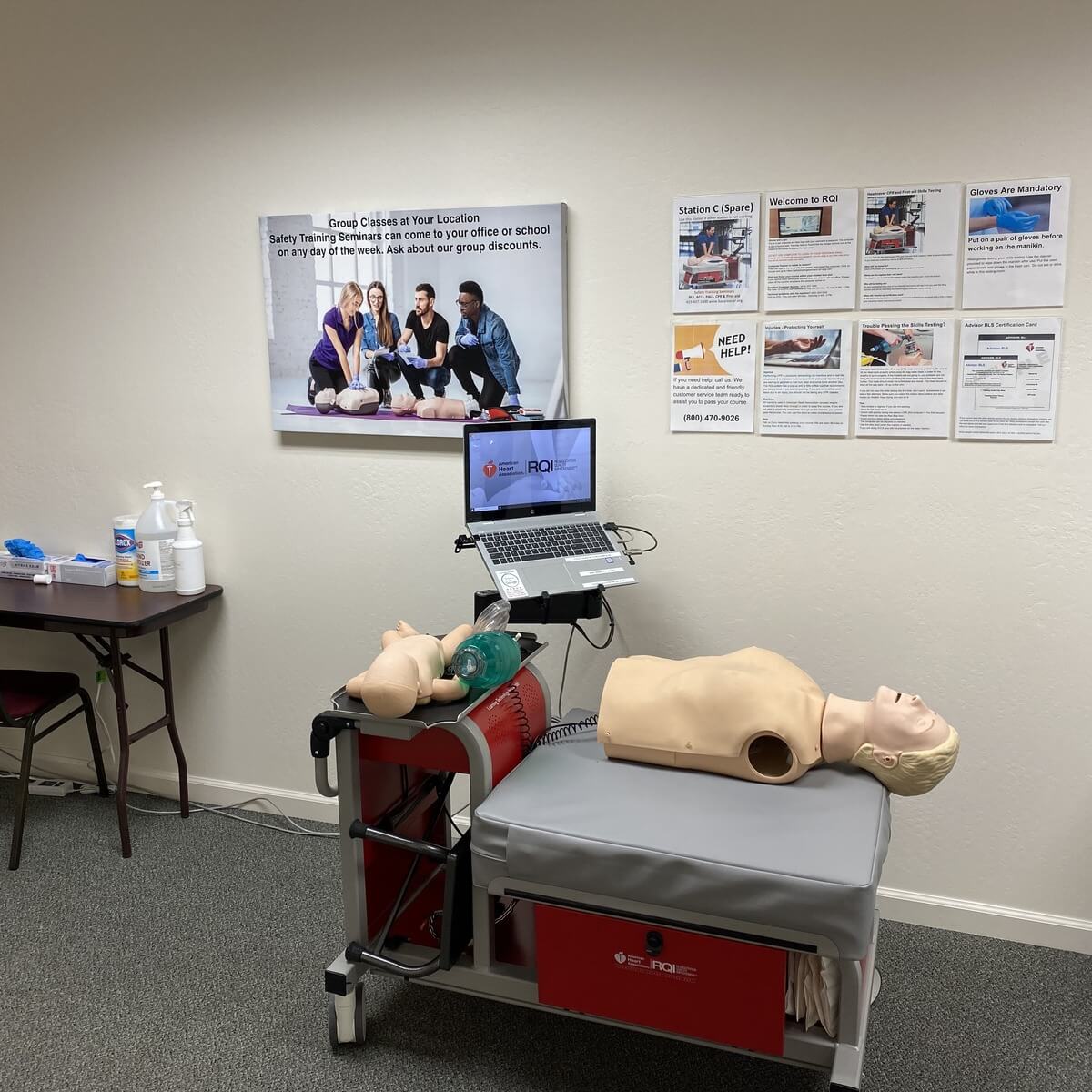Looking for a convenient and effective way to get your BLS certification in San Francisco? HeartCode BLS offers a blended learning approach that combines online coursework with a hands-on skills session. This flexible format allows you to learn at your own pace and complete the online modules whenever and wherever it’s convenient. This comprehensive guide will walk you through everything you need to know about BLS Heartcode in SF, including how it differs from traditional BLS courses, the benefits of blended learning, and how to find the right class for you. We’ll also explore how HeartCode BLS empowers you to provide high-quality CPR and contribute to better patient outcomes.
Key Takeaways
- HeartCode BLS provides a flexible learning experience: The blended learning format lets you complete the online modules at your own pace, fitting the training around your busy schedule. The shorter in-person skills session focuses on practical application and certification.
- Effective BLS skills improve patient outcomes: HeartCode BLS emphasizes high-quality CPR and other essential life-saving techniques, using the latest American Heart Association guidelines to ensure you’re prepared for real-life emergencies.
- Certification is accessible and convenient: Several reputable providers in San Francisco offer HeartCode BLS training. Find a course that works for you and gain the confidence and credentials to respond effectively in critical situations.
What is HeartCode BLS?
HeartCode BLS is the online portion of a blended learning course for Basic Life Support. It uses a mix of online resources like videos, simulations, and interactive activities to teach students the core knowledge and skills needed for BLS. This online portion lets you learn at your own speed, pausing and reviewing as needed. Once you finish the online modules, you’ll schedule a shorter, in-person skills session to demonstrate your abilities and receive your certification.
Key features of blended learning
Blended learning combines the convenience of online learning with the benefits of hands-on practice. The HeartCode BLS online portion uses an adaptive algorithm, meaning the program adjusts to your learning pace and focuses on areas where you need more practice. You’ll spend less time on topics you’ve already mastered, making your learning journey more efficient. This flexible approach allows you to fit the training into your busy schedule, completing the online modules whenever and wherever it’s convenient. This guide to HeartCode BLS explains the advantages of blended learning.
How it differs from traditional BLS
Traditional BLS courses typically involve attending a longer, in-person class for all components. HeartCode BLS offers a more flexible, blended learning format. You complete the cognitive portion online at your own pace, then attend a shorter, in-person skills session. This approach to BLS training is ideal for busy professionals and anyone who prefers a more personalized learning experience. It allows healthcare providers to balance their training with their other responsibilities.
Why Choose HeartCode BLS?
HeartCode BLS offers a blended learning approach that combines online coursework with an in-person skills session. This format provides several key advantages over traditional classroom-based BLS training.
Flexible, Self-Paced Learning
The online portion of HeartCode BLS lets you learn at your own speed. The program uses an adaptive algorithm to personalize your learning experience, meaning you can spend more time on areas where you need extra practice and breeze through concepts you’ve already mastered. This flexibility makes HeartCode BLS a great option for busy professionals and anyone who prefers a more individualized learning approach. You can complete the online modules whenever and wherever it’s convenient for you. For those in the Daly City area, this guide to BLS HeartCode offers helpful information.
Better CPR, Better Outcomes
Studies show that providing high-quality CPR immediately after cardiac arrest is linked to improved patient outcomes. The HeartCode BLS program emphasizes the skills and knowledge needed to provide effective CPR in real-life situations. By combining interactive online learning with hands-on practice, HeartCode BLS helps build confidence and competence in delivering life-saving care. The American Heart Association provides evidence-based guidelines for BLS, ensuring the training aligns with the latest research and best practices.
Nationally Recognized Certification
Upon successful completion of both the online modules and the in-person skills session, you’ll receive an American Heart Association BLS Provider certification card. This nationally recognized credential demonstrates your proficiency in BLS and is often a requirement for healthcare professionals, first responders, and other roles. The blended learning approach of the HeartCode program is a trusted and respected pathway to BLS certification.
Current Guidelines and Content
HeartCode BLS uses the most up-to-date American Heart Association guidelines and content. The online modules include videos, interactive exercises, and simulations to teach essential BLS knowledge and skills, ensuring you’re learning the latest techniques and protocols for providing effective basic life support. This page about HeartCode BLS offers further details about the program’s online component. This commitment to current guidelines means you can trust the quality and relevance of your HeartCode BLS training.
Get HeartCode BLS Certified in San Francisco
Getting your HeartCode BLS certification in San Francisco is straightforward. The program blends online learning with a hands-on skills session, offering flexibility and a practical approach. Here’s what you can expect:
Online portion: What to expect
The HeartCode BLS program starts with an interactive online course. This covers the fundamental knowledge and skills needed for BLS. You’ll work through modules at your own speed, fitting the training around your schedule. This online portion lets you learn the essentials before demonstrating your skills in person.
Skills session: What to expect
After completing the online modules, you’ll attend a hands-on skills session at one of Safety Training Seminars’ convenient San Francisco locations. This session focuses on practicing and evaluating the techniques you learned online. You’ll work with certified instructors and receive real-time feedback, ensuring you’re fully prepared to respond to real-life emergencies. For healthcare professionals looking to refresh their resuscitation skills, check out our RQI classes.
Time commitment and scheduling
The online portion typically requires one to two hours, and the in-person skills session lasts between 40 and 60 minutes. Safety Training Seminars offers BLS classes daily, from 7 am to 6 pm, making it easy to find a time that works for you. Plus, you receive your American Heart Association BLS certification card the same day you complete the skills session. We also offer a low price guarantee, ensuring you receive high-quality training at a competitive price.
Find HeartCode BLS Classes in San Francisco
Finding the right HeartCode BLS class boils down to your schedule, budget, and learning style. Here are a few reputable training providers in San Francisco:
Safety Training Seminars
Safety Training Seminars offers the AHA HeartCode BLS course, combining online learning with a hands-on skills session. Complete the online portion at your own pace, then schedule a short skills test at one of their convenient San Francisco locations. Visit their BLS course page for details and registration.
Revive CPR
Revive CPR also provides AHA-certified HeartCode BLS training. Their blended learning approach lets you work through the online materials independently before attending an in-person skills check. Revive CPR often offers same-day certification after the skills session.
UCSF Kanbar Center
For a more traditional classroom setting, the UCSF Kanbar Center offers in-person AHA BLS courses. While not specifically the HeartCode blended learning format, their comprehensive program covers the same core material and results in the same AHA certification. Visit the UCSF Kanbar Center website for more information.
Bay Area CPR
Bay Area CPR offers both online and in-person BLS courses, including the AHA HeartCode BLS option. With various locations throughout the Bay Area, they offer flexible scheduling for your skills session. Learn more about their BLS certification courses on their website.
How Much Does HeartCode BLS Cost?
HeartCode BLS combines online learning with an in-person skills session, so understanding the total cost means looking at both parts. Let’s break down the typical price structure.
Online Course Fees
The online portion of HeartCode BLS typically costs between $25 and $40. This fee covers the online learning materials, which you can work through at your own pace. Safety Training Seminars offers the complete HeartCode BLS course, including the skills test and certification card, for $120. You can find more information on their BLS CPR classes in San Francisco.
Skills Session Pricing
After completing the online coursework, you’ll schedule a hands-on skills session. This typically costs between $75 and $90 and lasts about an hour. Revive CPR, for example, offers skills sessions for $89.
Cost Comparison with Traditional BLS
Traditional BLS courses are often priced similarly to HeartCode BLS, generally ranging from $100 to $130. While the payment structure may differ, the overall investment is comparable. Bay Area CPR offers both traditional and HeartCode BLS for around $120, covering both online learning and the skills test. See their website for details on their BLS classes in San Francisco. The best option for you depends on your learning style and schedule.
Prepare for HeartCode BLS
What you’ll need
Getting started with HeartCode BLS is straightforward. You’ll need a computer or tablet with reliable internet access to complete the online portion. Make sure your device’s audio and video capabilities are working correctly. While specific software isn’t usually required, double-check the course requirements. Having a notebook and pen handy can be helpful for jotting down key concepts or questions.
Tips for online and hands-on success
HeartCode BLS blends online learning with in-person skills practice. To make the most of this format, approach the online modules with focus. The program adapts to your learning pace, so take your time and truly understand the material. Don’t rush! When you move to the hands-on portion, be prepared to actively participate. Ask questions, practice the skills, and don’t hesitate to request feedback from your instructor. This blended learning approach combines flexibility with practical application. High-quality Basic Life Support training is crucial for improved patient outcomes, whether online or in person, so absorb the information thoroughly.
Debunking common misconceptions
It’s easy to get tripped up by misconceptions surrounding HeartCode BLS. One frequent myth is that online BLS training isn’t as effective as traditional classroom learning. This isn’t true. HeartCode BLS follows the same American Heart Association guidelines as traditional courses and provides the same certification. Another misconception is that BLS certification is only for healthcare providers. Anyone can—and should—learn BLS, empowering them to respond effectively in emergencies. Check out this article clearing up misconceptions about BLS. Finally, some believe that completing the online portion is enough. Remember, HeartCode BLS requires both the online modules and the in-person skills session for full certification.
Your In-Person Skills Session: What to Expect
After completing the online portion of your HeartCode BLS training, you’ll participate in an in-person skills session. This session focuses on practicing and demonstrating the skills you learned online. It’s essential for receiving your American Heart Association BLS certification. Here’s what you can expect:
Skills Checklist
The skills session is designed to evaluate your proficiency in key BLS skills. Your instructor will observe and assess your ability to perform these skills correctly:
- High-quality CPR: You’ll demonstrate proper chest compressions, including depth, rate, and hand placement. You’ll also practice giving rescue breaths and coordinating compressions with ventilations.
- AED Use: You’ll learn how to operate an automated external defibrillator (AED) safely and effectively. This includes proper pad placement and following AED prompts.
- Bag-Mask Ventilation: You’ll practice providing ventilations using a bag-mask device. This is an important skill for assisting patients who aren’t breathing adequately.
- Relief of Choking: You’ll learn techniques for relieving choking in both adults and infants.
Session Format and Duration
The in-person skills session typically lasts about one to two hours. The HeartCode BLS program combines online learning with this required hands-on component. Your instructor will review key concepts, answer any questions, and guide you through practice scenarios. The session is interactive and allows for personalized feedback. Because the HeartCode BLS program uses an adaptive algorithm, you’ll spend more time on topics you find challenging.
Interactive Elements
While the online portion of HeartCode BLS utilizes video demonstrations and interactive activities, the in-person skills session offers a different kind of interactivity. You’ll work with training manikins and AED trainers to simulate real-life scenarios. This hands-on practice is crucial for building muscle memory and confidence in your BLS skills. You’ll also have the opportunity to interact with your instructor and ask questions, ensuring you fully understand the material.
Is HeartCode BLS Right for You?
Deciding on the right BLS certification course often comes down to personal needs and learning style. HeartCode BLS, with its blended learning approach, offers a unique set of advantages that may be the perfect fit. Let’s break down who benefits most from this type of training.
Healthcare Professionals
For healthcare providers, maintaining BLS skills is non-negotiable. High-quality BLS is directly linked to improved patient outcomes, especially in cardiac arrest situations. The American Heart Association emphasizes how crucial immediate and effective BLS is in the chain of survival. HeartCode BLS allows healthcare workers to refresh their knowledge and skills conveniently, fitting it into busy schedules. The online portion covers the latest guidelines and protocols, ensuring you’re up-to-date with best practices. The required hands-on skills session then allows you to demonstrate competency and receive your certification.
Non-Healthcare Individuals
Contrary to popular belief, BLS certification isn’t just for medical professionals. Anyone can benefit from learning these essential skills. Knowing BLS empowers you to respond effectively during emergencies, potentially saving a life at home, in your community, or at your workplace. HeartCode BLS offers a less intimidating entry point for those new to medical training. The self-paced online portion allows you to learn at your own speed and comfort level before attending the in-person skills session. This approach can be particularly helpful for individuals who prefer independent study or have busy schedules. Articles like this one on common misconceptions about BLS highlight why it’s a valuable skill for everyone.
Employers
HeartCode BLS presents a streamlined and cost-effective way to train employees. The flexible, blended format minimizes disruption to workflows, allowing employees to complete the online portion at their convenience. The combination of online learning and hands-on practice ensures comprehensive training, leading to a more confident and prepared workforce. This proactive approach to safety training not only benefits employees but also creates a safer work environment. Resources like this guide to HeartCode BLS offer more information on how this program can benefit your workplace. It’s a practical solution for meeting workplace safety requirements and fostering a culture of preparedness.
Renew Your HeartCode BLS
Renewal process
Unlike some other certifications, the American Heart Association (AHA) requires all BLS providers to retake the full course, including both the online portion and the hands-on skills session. There isn’t a separate renewal course or a shortcut for experienced providers. This means you’ll again complete the HeartCode online modules and then attend an in-person skills session. Once you complete both components, your BLS certification is valid nationwide and issued the same day you finish your skills check. You can find convenient BLS renewal courses through providers like Safety Training Seminars.
Continuing education
Staying up-to-date with the latest BLS guidelines and techniques is crucial for providing effective care. High-quality BLS is a critical link in the chain of survival for cardiac arrest and other emergencies. Regular training, like the HeartCode BLS program, ensures you’re prepared to respond confidently and competently, leading to improved patient outcomes. This blended learning approach reinforces essential skills and knowledge, ultimately contributing to better care during emergencies. Regular BLS training isn’t just a requirement—it’s an investment in your ability to provide effective, potentially life-saving care. It helps healthcare professionals and other responders stay sharp and ready to handle critical situations. It also ensures you’re familiar with any updates to evidence-based guidelines for resuscitation and emergency cardiovascular care.
HeartCode BLS & Patient Care
This section explores how HeartCode BLS, combined with high-quality CPR, contributes to improved patient outcomes.
Improved CPR and ROSC rates
Effective CPR is crucial for increasing survival rates during cardiac arrest. Studies show a significant improvement in return of spontaneous circulation (ROSC) rates after the implementation of BLS and ACLS training, highlighting the importance of proper training. Delivering high-quality BLS according to the American Heart Association guidelines leads to better patient outcomes. HeartCode BLS equips individuals with the skills to perform effective CPR.
Better cardiac emergency response
The effectiveness of BLS in treating cardiac arrest is well-documented. High-quality BLS, including sufficient chest compressions and prompt defibrillation, significantly improves patient outcomes. Programs like HeartCode BLS empower responders to act quickly and efficiently in emergencies. The RQI HeartCode Complete program has demonstrated improvements in chest compression rates among out-of-hospital cardiac arrest patients, further highlighting the positive impact of structured training like HeartCode BLS on emergency response effectiveness.
Related Articles
- HeartCode BLS Oakland: Your Certification Guide – San Francisco CPR Classes
- HeartCode BLS San Francisco: Your Guide to Online CPR – San Francisco CPR Classes
- BLS Classes in San Francisco: Your Complete Guide – San Francisco CPR Classes
- BLS Courses in San Francisco: The Complete Guide – San Francisco CPR Classes
- HeartCode BLS San Francisco: Your Guide to Online CPR – San Francisco CPR Classes
Frequently Asked Questions
What exactly is involved in the HeartCode BLS blended learning course? HeartCode BLS combines online learning with a shorter, in-person skills session. You’ll first complete interactive online modules covering BLS fundamentals at your own pace. Afterward, you’ll attend a hands-on session to demonstrate your skills to a certified instructor and receive your AHA BLS Provider card.
How does HeartCode BLS differ from a traditional BLS course? Traditional BLS courses are usually held entirely in person over a longer period. HeartCode BLS offers more flexibility by allowing you to complete the cognitive portion online at your convenience. The in-person skills session is then shorter and focused on practical application.
Why is the blended learning format beneficial? The blended format accommodates busy schedules. You can complete the online modules anytime, anywhere. It also personalizes the learning experience. The program adapts to your pace, focusing on areas where you need more practice.
What if I’m not a healthcare professional? Is BLS training still relevant for me? Absolutely. BLS training is valuable for anyone. Knowing how to respond to emergencies like cardiac arrest can save lives, whether at home, in public, or at your workplace.
How do I renew my BLS certification once it expires? AHA BLS certifications require retaking the entire course, including both the online modules and the in-person skills session, every two years. There’s no separate renewal or refresher course.




